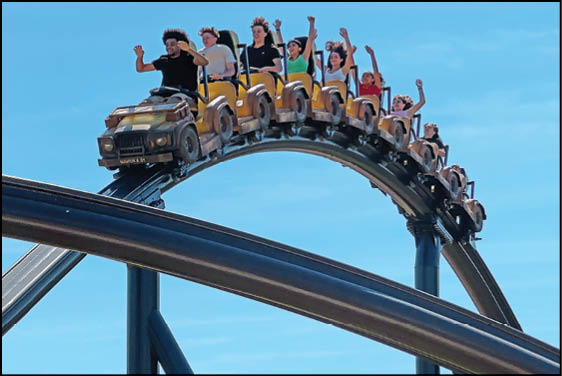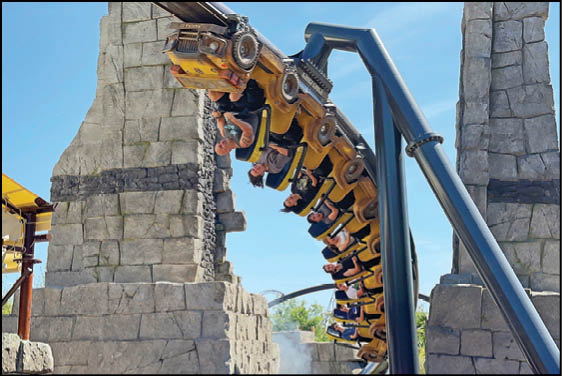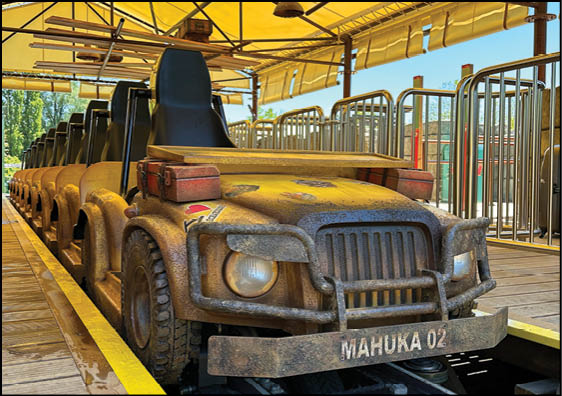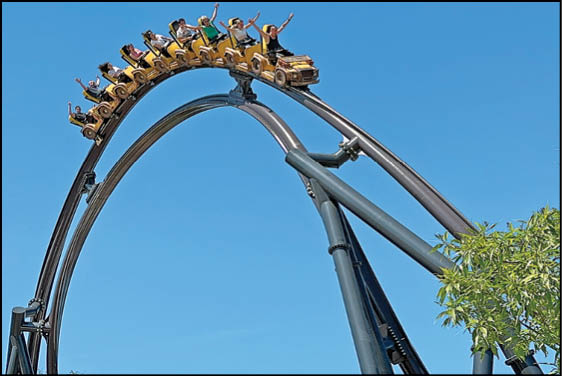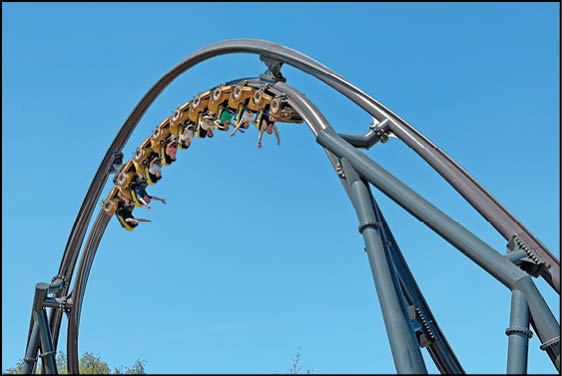Single-rail Mahuka from Intamin zips into Walibi Rhône-Alpes
AT: Tim Baldwin
tbaldwin@amusementtoday.com
LES AVENIÈRES, Auvergne-Rhone-Alpes, France — This summer, Walibi Rhône-Alpes opened its sixth coaster, and it is unlike any other coaster in France.
The coaster, named Mahuka, is a single-rail model supplied by Intamin. Exotic Island is a recently developed themed area of the park that evokes both mystery and the beautifully lush tropics with a Pacific islands feel. Mahuka means “to escape” in Hawaiian.
Notably, the ride is compact. But because of its tight nature, it emphasizes the thrill in a layout just shy of 2,000 feet.
Among Intamin’s portfolio, the coaster is dubbed a Hot Racer model.
“The Intamin Hot Racer, with the specially developed and designed single-rail track and the open single-seater train design, offers thrilling and exciting layouts on a small footprint, which were formerly only possible with the bigger LSM Coasters and Mega Coaters,” said Sascha Czibulka, executive vice president, Intamin. “Like this, Intamin can bring thrilling coasters also to smaller parks. The seat and restraint of the trains are the very same highly comfortable and most reliable system as used on our large-scale coasters, be it LSM or Mega. Furthermore, we are increasing the excitement level of the ride with our powerful state-of-the-art tire launches, granting a high level of layout flexibility without the need for big heights.”
Mahuka features two launches. One takes place at the beginning of the ride, the other midway through. The launches deliver a speed of 42 mph.
To help the coaster fit into the land, thematic touches help tell the story. Guests journey into the remains of an abandoned temple but are cautioned not to provoke the God of Fire. The trains are stylized as exploration trucks.
A musical score was provided by Audiogazer GbR.
A distinctive characteristic of Mahuka is its iconic arch around 60 feet tall. What is unique about the structure is that the trains go both over the top and flip underneath.
“Originally the two high points after the launch were planned as stand-alone elements,” Czibulka shared with Amusement Today. “During the detailed design process, our engineers came up with the idea to combine the supporting structure of the top hat, as they were really close to each other, in order to reduce the amount of steel and to provide a more aesthetic look of the element. It was a win-win development from the technical, cost and optical point of view. The park loved this idea so much, that they directly used this top hat as the entry portal to the new park area.”
Riders sit single-file, with nine riders per train. Mahuka operates with two trains. Riders must be between 120 centimeters (four feet) and 195 centimeters (six feet, five inches). An hourly capacity of 600 riders can be reached.
During the course of the ride, three inversions are included in the tangle of track. However, what is probably more memorable are the 13 moments of airtime, the most weightlessness on any coaster at the park. The elements are snappy and often close to the ground giving a rush of speed.
As this is the second installation of a Hot Racer model, AT asked if refinements and improvements were made on the newest installation.
“Building upon its predecessor at Luna Park in Australia, the new Hot Racer has undergone a number of enhancements,” Czibulka confirmed. “The chassis was refined to enhance ride comfort and ensure an even better fit to the track. Additionally, the brand-new carbon-fiber lap bars contribute to a lighter train and lower center of gravity, enhancing the experience with an even smoother ride.”
The restraint system uses overhead lap bars, which offer a great sense of upper-body freedom without over-the-shoulder restraints.
The benefits of the single-rail coaster are both economical and environmental.
“Due to the use of modern manufacturing technologies and lightweight materials like aluminum and carbon fibers, the weight of the train could be significantly reduced,” said Czibulka. “In combination with the compact layouts, the amount of steel necessary to produce track and columns was reduced to a minimum, which has a positive impact on the overall carbon footprint of the ride without compromising on the ride experience. In addition, we are offering the possibility to recuperate the braking energy to either feed it back to the grid or to store the energy for the next launch of the train.”
Walibi Rhône-Alpes opened in 1979 and is currently operated by Compagnie des Alpes.






